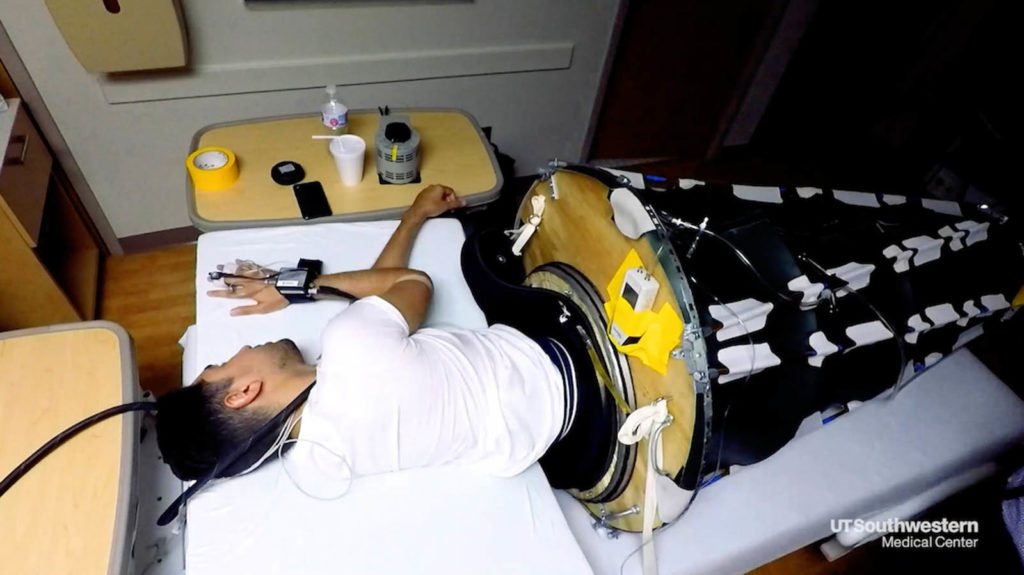
The University Texas Southwestern (UTSW) has been involved in a brain pressure project that NASA says is critical to its mission to Mars. According to press information from UTSW, scientists there have created a sleeping bag designed to help solve vision issues that occur when astronauts experience zero gravity over a prolonged period of time.
While experiencing earth’s gravitational force, the body naturally pulls fluids down when a person rises each morning. This process called “unloading” can’t occur in space because astronauts never really stand up in zero gravity. This causes extra fluid to collect in the head, which applies pressure to the eyes, and that impacts eyesight.
Researchers showed, with a volunteer participant, that by placing the lower body in a sealed, vacuum-equipped sleeping bag they could pull down body fluids that naturally flowed into his head while reclining.
“We don’t know how bad the effects might be on a longer flight, like a two-year Mars operation,” said Benjamin Levine, M.D., a UTSW cardiologist who is helping NASA address the health risks of brain pressure and abnormal blood flow in space. “It would be a disaster if astronauts had such severe impairments that they couldn’t see what they’re doing, and it compromised the mission.”
The phenomenon has vexed scientists for more than a decade and remains one of the biggest health dilemmas of human space exploration. New research published in JAMA Ophthalmology shows that by suctioning these fluids and unloading brain pressure, the specially designed sleeping bag may prevent vision problems astronauts endure in space, where fluids float into the head and continually push and reshape the back of the eyeball. Researchers found that while just three days of lying flat induced enough pressure to slightly alter the eyeball’s shape, no such change occurred when the suction technology was used.
 TEXTILES.ORG
TEXTILES.ORG


